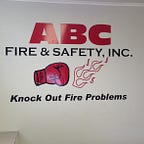Fire Suppression Systems: Design, Installation, and Maintenance
Introduction:
Fire suppression systems play a crucial role in protecting lives and property by detecting and extinguishing fires swiftly and effectively. In this article, we will delve into the design, installation, and maintenance of fire suppression systems, highlighting their importance in fire safety across various settings.
Understanding Fire Suppression Systems:
Fire suppression systems are engineered to detect, control, and extinguish fires in their early stages, minimizing damage and preventing their spread. These systems are designed based on the principles of fire science and utilize various suppression agents and technologies to combat different types of fires.
Types of Fire Suppression Systems:
Sprinkler Systems: Sprinkler systems are one of the most common types of fire suppression systems. They consist of a network of pipes connected to sprinkler heads, which are activated by heat to release water or other extinguishing agents onto the fire.
Clean Agent Systems: Clean agent systems use gaseous agents such as FM-200, CO2, or inert gases to suppress fires. These agents are non-conductive and leave no residue, making them ideal for protecting sensitive equipment and valuable assets.
Foam Systems: Foam systems discharge a mixture of foam concentrate and water to create a blanket over the fire, smothering it and preventing re-ignition. Foam systems are commonly used in high-hazard environments such as fuel storage facilities and chemical plants.
Dry Chemical Systems: Dry chemical systems utilize dry chemical powder to extinguish fires by interrupting the chemical reaction of the fire triangle. These systems are effective against Class A, B, and C fires and are often used in industrial settings.
Design Considerations:
When designing a fire suppression system, several factors must be considered to ensure its effectiveness and reliability:
Hazard Analysis: Conduct a thorough hazard analysis to identify potential fire risks and determine the appropriate type of suppression system for the specific hazards present in the environment.
System Layout: Design the layout of the suppression system to provide adequate coverage and ensure that all areas at risk of fire are protected. Consider factors such as building layout, occupancy, and fire load when determining the placement of suppression devices.
Suppression Agent Selection: Select the appropriate suppression agent based on the type of fire hazards present and the specific requirements of the environment. Consider factors such as agent compatibility, environmental impact, and regulatory compliance when choosing a suppression agent.
Installation Process:
The installation of a fire suppression system involves several steps to ensure that the system is installed correctly and functions as intended:
Pre-Installation Inspection: Before installing the suppression system, conduct a pre-installation inspection to assess the site conditions, verify compliance with regulatory requirements, and address any potential obstacles or challenges.
System Assembly: Assemble the components of the suppression system according to manufacturer specifications, ensuring that all components are properly sized, installed, and connected.
Piping Installation: Install the piping network of the suppression system, taking care to position pipes securely and avoid obstructions that could impede the flow of suppressant agents.
Device Installation: Install the suppression devices, such as sprinkler heads or nozzles, at the designated locations according to the system design. Ensure that devices are installed correctly and oriented to provide optimal coverage.
System Testing: Test the suppression system to verify proper installation and functionality. Conduct functional tests, flow tests, and activation tests to ensure that the system operates as intended and meets performance requirements.
Maintenance and Inspection:
Regular maintenance and inspection are essential to ensure that fire suppression systems remain operational and effective over time. Here are some key maintenance tasks:
Inspection: Conduct regular inspections of the suppression system to check for signs of damage, corrosion, or wear. Inspect all components, including piping, devices, valves, and control panels, for any issues that could affect system performance.
Testing: Test the functionality of the suppression system through regular flow tests, activation tests, and performance tests. Verify that all components operate correctly and that suppressant agents are discharged as intended.
Maintenance: Perform routine maintenance tasks, such as cleaning, lubricating, and replacing worn or damaged components. Ensure that all maintenance activities are performed by qualified technicians according to manufacturer recommendations and industry standards.
Record Keeping: Maintain detailed records of inspections, tests, and maintenance activities performed on the suppression system. Keep documentation of any repairs or modifications made to the system for reference and compliance purposes.
Conclusion:
Fire suppression systems are essential for protecting lives and property from the devastating effects of fires. By understanding the design, installation, and maintenance of these systems, property owners can ensure that their facilities are equipped with reliable and effective fire protection measures. From sprinkler systems to clean agent systems, the selection and implementation of the right suppression system are critical for mitigating fire risks and enhancing safety across various environments. With proper design, installation, and maintenance, fire suppression systems serve as a vital line of defense against the threat of fires, providing peace of mind and security for occupants and property alike.
